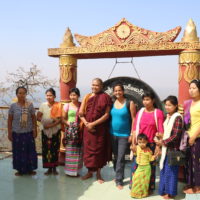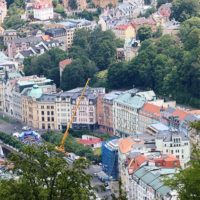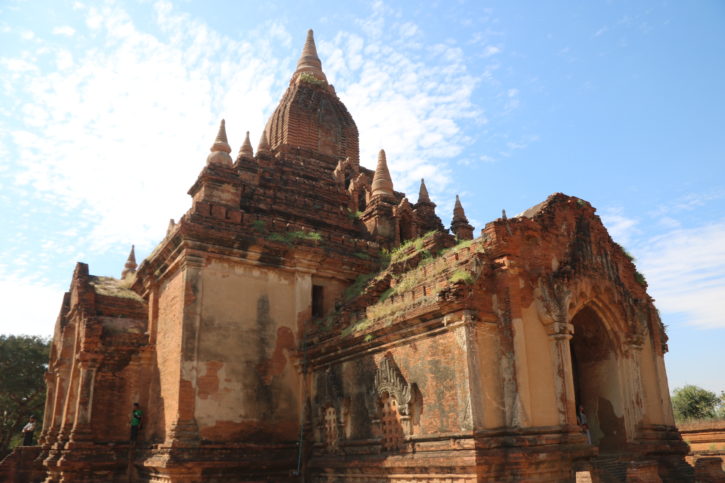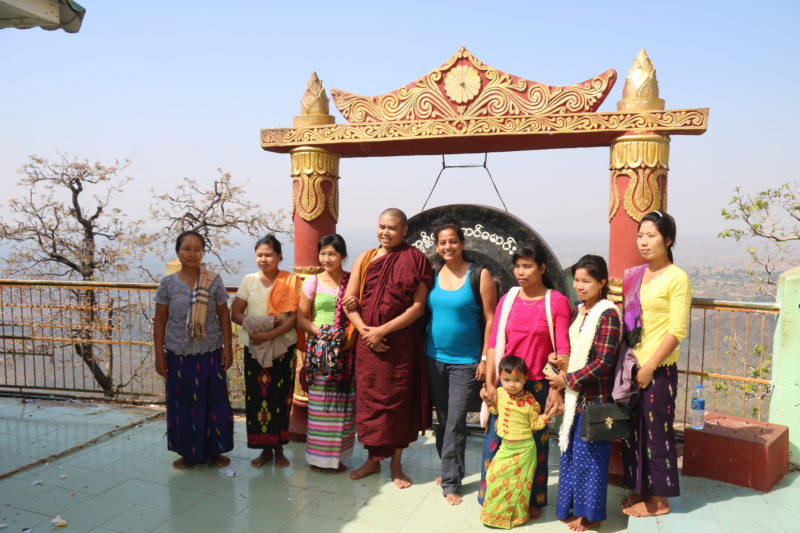Train to Thazi.
Three words that spelled romance. I had been looking up Train to Thazi for many months before I ventured out to Myanmar. I dreamed of that train journey – the beauty of which I saw in photos of bloggers and travel writers. The slow Train to Thazi has since been on my list of things to experience in Myanmar.
First things first –
Nyaung Shwe – Shwe Nyaung
Let’s get this straight. Nyaung Shwe is the tourist hub. This is where all your hotels, restaurants, coffee shops are. And of course, the picturesque Inle Lake and Inle Lake Wetland Sanctuary.
Shwe Nyaung is the nearest train station to Inle lake – the place you board the slow train to Thazi.
It is, well, same-same but different – as we Indians say. Like chalk and cheese. The distance between the two is approximately 10kms.
The train station and the train
Buying tickets: Advance purchase is not possible. Your best bet is to arrive early and queue up for it. So, there was no queue when I arrived (an hour early for the 8 am train) and got a ticket quite easily.
To purchase a ticket, tourists must produce their passport as well (this happens all over Myanmar). The passport numbers are noted down in 2-3 different books. How quaint!
The train station reeks of colonialism. It would be too, for it was built during the British rule. It is rather old and faded, but neat. There are no coffee-shops or snacks to be found at the station, but if you walk out of the station and turn right, there is a side street with a few shops selling Burmeese breakfast and one that sells puri-bhaji (deep fried Indian flatbread served with a stew of potato) – a Burmeese favourite. If you are doing the 11 hour journey and are averse to eating from vendors on the train, this is where you must get your water and snacks.
Burma’s last major rail line, from Thazi on the Rangoon – Mandalay line to Kalaw (a hill station some distance from Shwe Nyaung) was built between 1914 and 1918.
This journey is perfect for people who like trains, slow train journeys, have oodles of patience, have plenty of time to absorb and enjoy every moment without getting “road rage.”
In short, this is a journey for real travelers!
My train was due to depart at 8 am. And it did. It was a lucky day, I was told. Usually there is a delay.
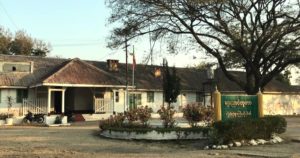

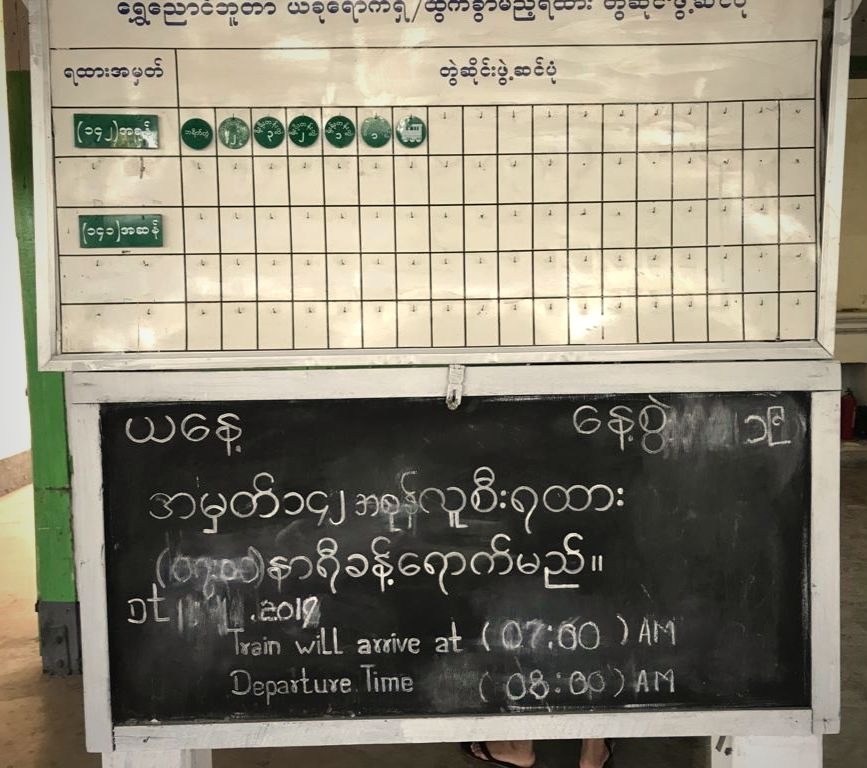
The journey of 11 hours
I am a sucker for slow trains. A classic example for this being my journey from Pyongyang to Beijing (23 hours) and another from Yangon to Bagan (17 hours) – let me not even get into other details, but you know what I mean.
The slow train to Thazi was just the kind of journey I was sure would make my travel in Myanmar memorable.
I settled back in my battered armchair in the first- class coach after first securing my backpack firmly on the rack above. My earlier experience with Burmese trains served me well. I had the window seat, but I needn’t have worried. The window had no shutters, so it didn’t matter which way I was facing. There were two other tourists on the train.

The carriages have certainly seen better days, but the upper class ones are surprisingly comfortable. There i no air conditioning, but huge windows that don’t shut – so do the math. Even though a handful of foreigners undertake this journey every day, the train is hardly mindful of the slight inconveniences – in fact, it celebrates it originality – the very reason travelers take this train. For more than a hundred years, this line has provided a vital link for people living in the southern Shan Hills.
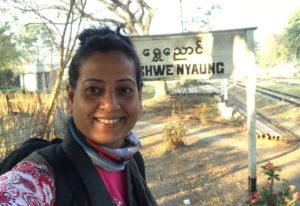
At 8.10am, we edged out of the station with a creak and a groan, but eager to experience what was probably the slowest train in Myanmar. I had been told that the train never exceeded 30kmph at top speed and literally crawled up the mountainous terrain and over bridges and came to complete standstill without rhyme or reason, just in the middle of nowhere. But it gave me the chance to see Shan state closely.
Distance: 247kms
Travel time: 11 hours.
The second-class coach is quite literally the “cattle class” and locals usually travel on this – sitting on floors or the hard, wooden seats but essentially with bags full of stuff – vegetables, meat, eggs, flowers, snacks…
The train twisted and turned, threatening to go off the track but slowed down considerably over the aging, narrow bridges – so narrow that you could look straight down into the abyss below.
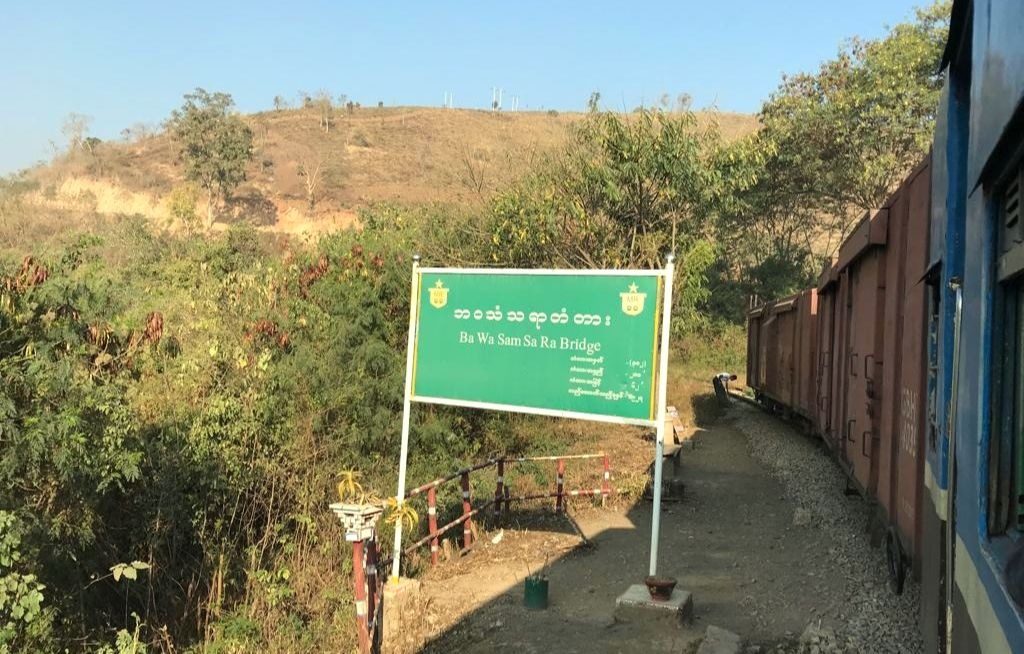
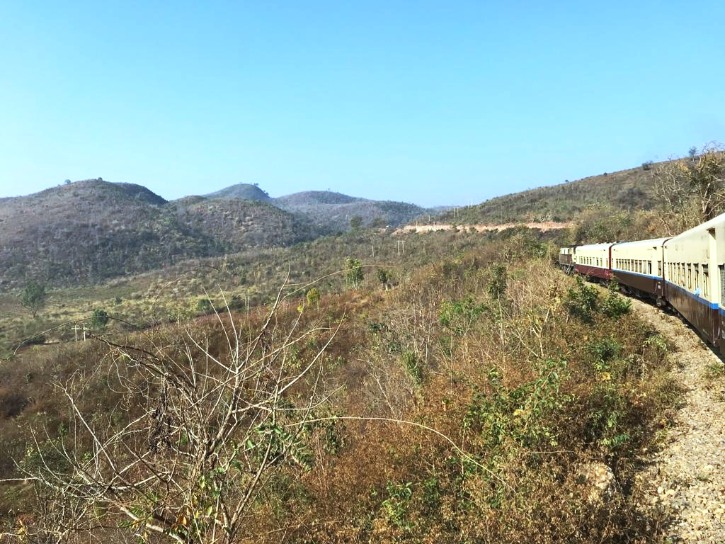
At Heho, another tourist hopped on. A German woman, my age. We were now four tourists in all. Eva, the German was headed to Kalaw. We became friends.
I spent the early part of my journey admiring the beauty of Shan State. Every few kilometres we come to a station, some little more than a rickety shelter in the middle of nowhere, and others bustling with activity.
The first part of the journey (Shwe Nyaung – Kalaw) was accompanied by fantastic views of the plains of Shan state, and the crop fields that lined the mountains. We took turns sticking out of the window and of course breathing in a lot of dust and what not! It was exciting in a rustic way and the local kids loitering along the tracks cheerfully waved us on.
Every half hour or so the train stops at a station. It empties out and fills up rapidly. The train stops, chugs along a while and stops again. Nobody gives us much attention – people of Myanmar are used to tourists. To them, it is an everyday sight.
A mini- market on the train to Thazi
The inside of the train is interesting. As we progressed down the aging tracks, topping at small stations, more people boarded. The cattle-class swelled up with people and produce and some of them spilled over to the “first class” – not that any of us minded that much. After staring at the countryside for a while, it was a good distraction to watch people. Trays of quail eggs were brought out and passed around, bananas and fried chicken did the rounds and one particularly badass mama whipped out a cigar and started blowing smoke!
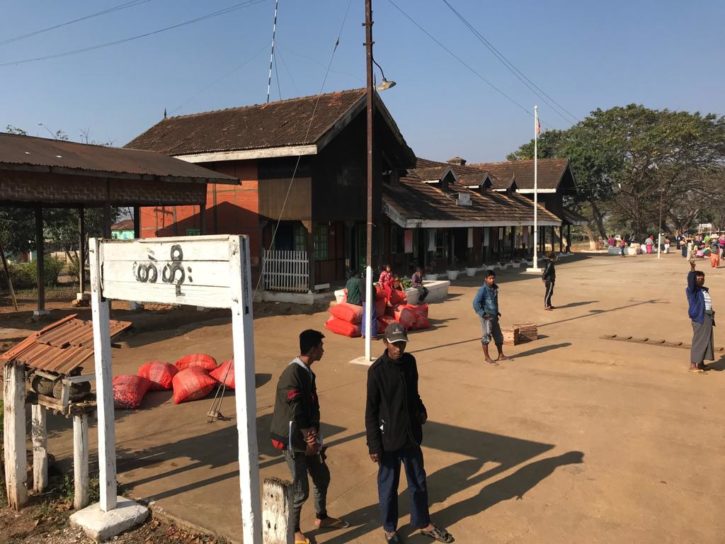
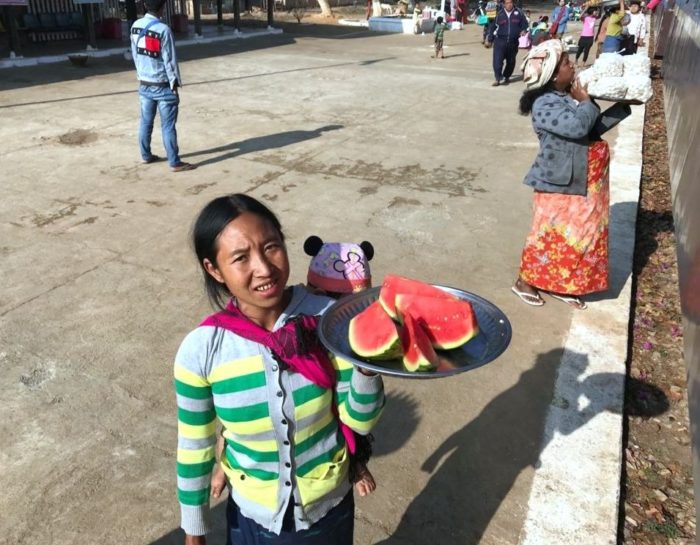
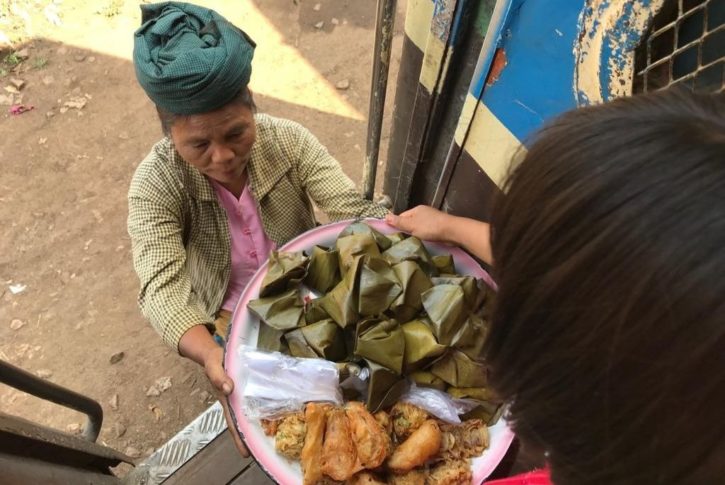

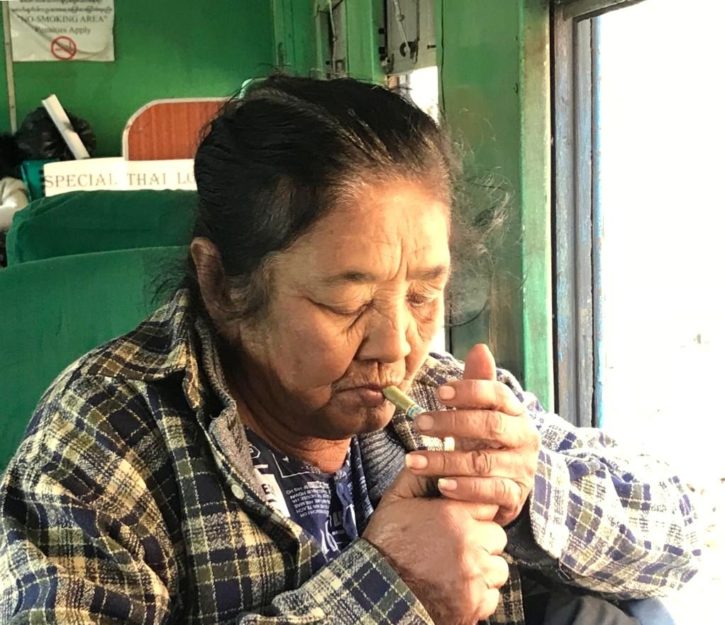
Come to think of it, quail eggs wrapped in plastic are pretty common. They are genuinely delicious, but I have never once seen a quail farm anywhere in Myanmar. I suppose few questions must go unanswered.
Men and women pushed their wares down the aisles and offered a smile as they passed me by. There was every kind of snack on trays perched defiantly on their heads. No way anyone could hungry on this train.
The train made several stops. Sometimes it just stopped briefly and sometimes longer, but there was no way to know how long it would stay. I took my chances every time and twice had to run after it as it slipped away!
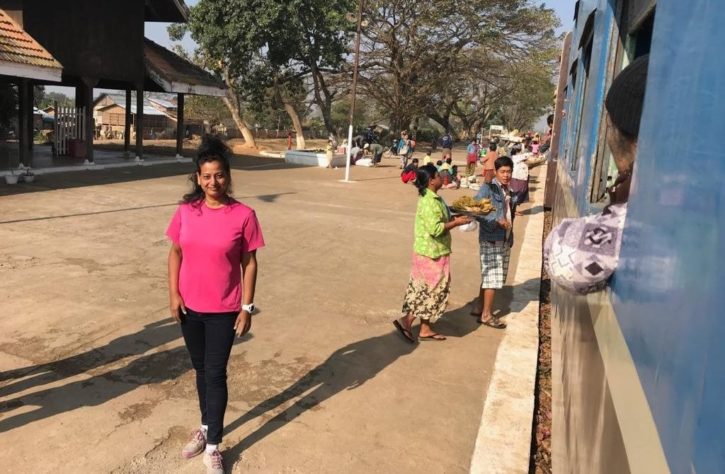
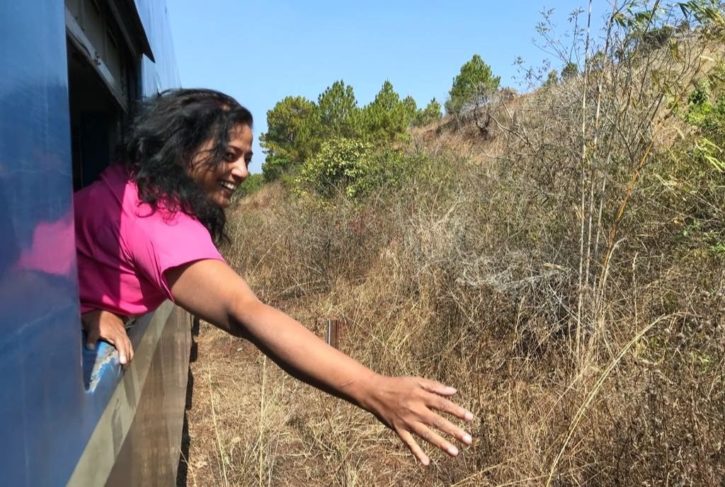
Every time the train called at a station, it set off a flurry of activities. Goods were loaded and unloaded, people got off, dashed to the food stalls or water-pots, rushed to greet a friend or simply to stretch (like me) and enjoy the activities around. A good time as any to potter around the stations, some of which were basic, ramshackle structures.
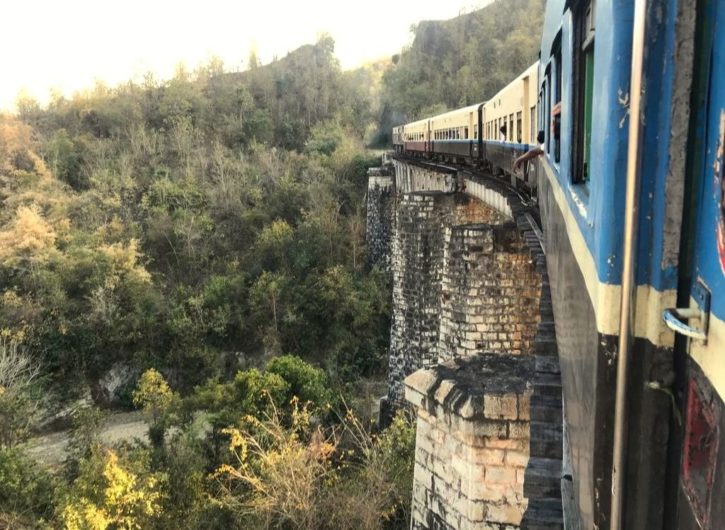
Why you should travel on this train
|
The Colonial charm of Kalaw
Located 4298 ft above sea level, Kalaw is everyone’s favourite destination because of its balmy weather. An old British Hill station, Kalaw is “major” stop on the rail line.
The train arrived at the old British hill station of Kalaw around 12 pm. Here, we bid goodbye to Eva and I continued my exploration of the mock Tudor building and photographing the neat streets behind the station. In all honesty, Kalaw’s train station is an appropriate introduction to the former British hill station, with its mock-tudor architecture and laid-back charm. It is a refreshing multi-cultural atmosphere.
Heaps of flowers were exchanging hands. Flowers of all colours passed through the gaping windows, transforming the bleak cattle-class into a riot of colours.
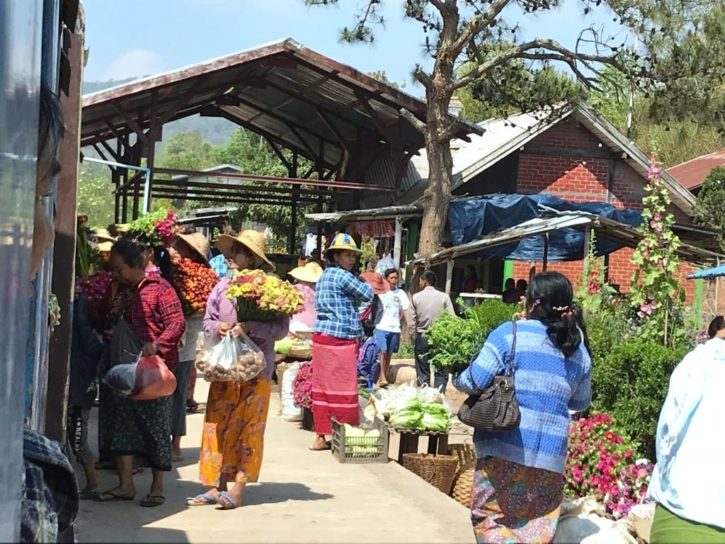
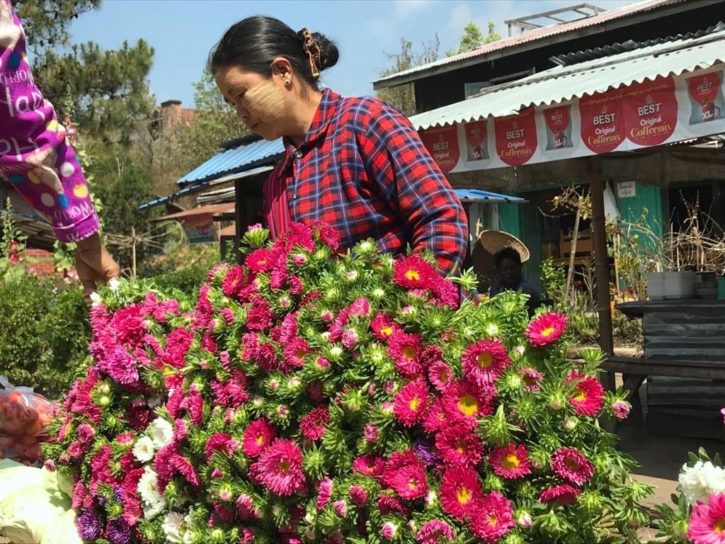
After Kalaw, however, the landscape changed as we wound our way through dense vegetation of the hills and mountains. The many wayside halts at village stations were good photo opportunities of the local communities.
The train zigzagged its way down hill, negotiating the steep slopes with care. After what seemed like a labourious process of “going backward and forward” (a smart engineering skill) a hundred times, we made it downhill safely.
Approaching Thazi in the gathering darkness means another new problem. Flying insects. Attracted to the light inside the slow- moving train, insects stream in through the open windows. The locals seemed to ignore this small inconvenience quite easily, but I found it hard to keep my eyes open.
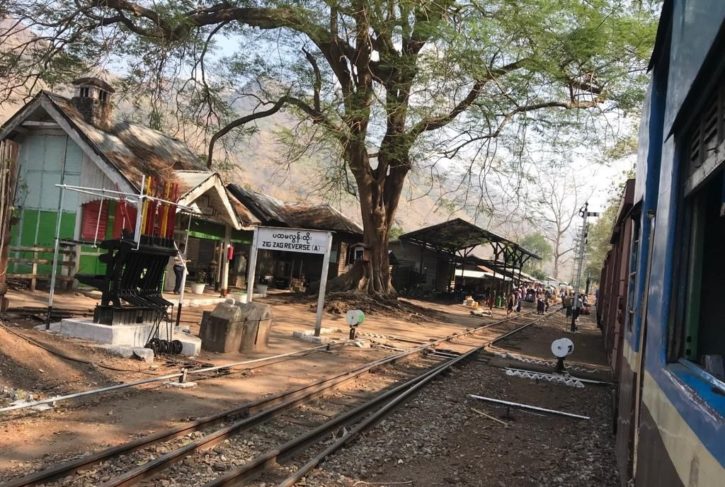
It was dark when the train lurched into Thazi. I am glad I made this trip, having survived 11 hours on fruits and samosas, chicken and quail eggs. And tea.
Since there were only two remaining tickets on first class (sleeper) to Yangon, I decided to let the Australian couple have them. In return, they bought me beer (just behind the station) as we waited for our train to arrive. The Thazi station is quite big, since it is an interchange for connecting trains.
If you are stuck at Thazi…Travelers have been known to be stuck at Thazi – for non-availability of onward tickets and sometimes missing their train, especially if the slow train has arrived late. Under the circumstance, Moonlight Guest House in Thazi is the place to go for the night. They are used to accommodating late passengers, especially foreigners and there are plenty of rooms to be hand. |


